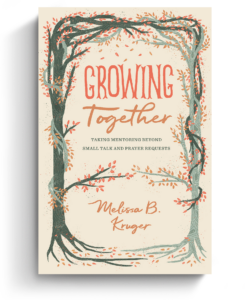This is the second in a three-part series on teaching children to study the Bible. See also part one, How to Teach Your Kids to Study the Bible.
Of the three steps of Bible study—observation, interpretation, and application—the middle one is often the most daunting. We may hear words like “hermeneutics” (the science of interpretation) or “exegesis” (critical explanation or interpretation of a text) and think interpretation is something best left to experts.
While we should certainly take advantage of the expertise of pastors, scholars, and theologians, basic interpretation of the Bible is a necessary task for every believer. Here are seven principles that should guide your efforts as you teach children to interpret the Bible.
Teaching Interpretation
Don’t Go It Alone — Never has the average person living in a Western country had access to such an abundance of superb biblical scholarship as we do today. Many excellent and inexpensive concordances, commentaries, and study Bibles are available, as well as a vast array of free online resources. Let these tools help you understand and interpret what God is saying in his Word. The Bible is a gift for the church, so we should join with our brothers and sisters (including through books and other resources) in searching for its meaning.
Context Is Key — Noting the various contexts—historical, social, political, and so on—will help them understand and interpret a text, but we should pay special attention to the literary context. Look at the verses, paragraphs, and chapters immediately before and after a passage to understand what the writer intended.
The Plain and Obvious Meaning — A passage may be difficult to understand because its context is unfamiliar to us. But we should always assume the meaning is straightforward and would have been understood by the Bible author’s contemporaries. “A common and persistent myth about the Bible is that its real meaning is hidden behind the surface message,” Wayne McDill says. “Even though the Bible uses symbolic or figurative language, most of it is clear to the reader. Even when you do not know about the people, places, and events in question, you can grasp the point of the text.”
The Bible Interprets the Bible — All Scripture is inspired by God (2 Timothy 3:16), so no part of the Bible contradicts the other parts. Use the clearer texts to shed light on passages that are harder to understand. And because God’s revelation is cumulative, use the parts that came later to understand what came before. For example, use the New Testament to interpret the Old Testament.
The Singular Meaning — Each passage of the Bible has a single and specific meaning, which means it has a single and specific interpretation. This is an extremely important principle. A passage may have numerous applications or lessons we can learn from it, but it will have only one meaning and one interpretation.
Don’t Rush Them to Application — Application is an essential aspect of Bible study. But too often we don’t spend enough time doing the hard word of observation and interpretation, because we want to get to the “relevant” part (“What does this mean for me?”). We need to ensure we are teaching our children that observing and interpreting God’s Word is itself valuable and not just a process to be endured to get to the application stage.
There are three questions, Sara Wallace says, that help kids read the Bible through the lens of the gospel:
- What does this passage teach me about God?
- What does this passage teach me about human beings (or myself)?
- What does this passage teach me about the need for and the coming of a Savior?
“What about application?” Wallace asks. “It’s coming. But begin by laying the foundation. Once your kids develop a habit of seeing answers to these three questions, they’ll then be able to ask, ‘What does God want me to do?’ We can only apply the Bible properly to our lives when the gospel is the driving force.”
Work Around Their Interest — The purpose of Bible study is not to turn your child into a pint-sized scholar, but to instill in them a lifelong love for learning Scripture. Asking kids to grind out interpretations of Isaiah or Nahum before they are ready could be counterproductive.
All 66 books of the Bible are important, but they aren’t equally interesting or relevant to your child. Because children have limited time for study (and limited interest in it), focus on the topics or passages that most interest them. Talk to them about which parts of the Bible to start with or focus on. Their motives for choosing a passage probably won’t be purely noble, but trust God to use their interest for his own purposes.
Involved in Women’s Ministry? Add This to Your Discipleship Tool Kit.
 We need one another. Yet we don’t always know how to develop deep relationships to help us grow in the Christian life. Younger believers benefit from the guidance and wisdom of more mature saints as their faith deepens. But too often, potential mentors lack clarity and training on how to engage in discipling those they can influence.
We need one another. Yet we don’t always know how to develop deep relationships to help us grow in the Christian life. Younger believers benefit from the guidance and wisdom of more mature saints as their faith deepens. But too often, potential mentors lack clarity and training on how to engage in discipling those they can influence.
Whether you’re longing to find a spiritual mentor or hoping to serve as a guide for someone else, we have a FREE resource to encourage and equip you. In Growing Together: Taking Mentoring Beyond Small Talk and Prayer Requests, Melissa Kruger, TGC’s vice president of discipleship programming, offers encouraging lessons to guide conversations that promote spiritual growth in both the mentee and mentor.

































